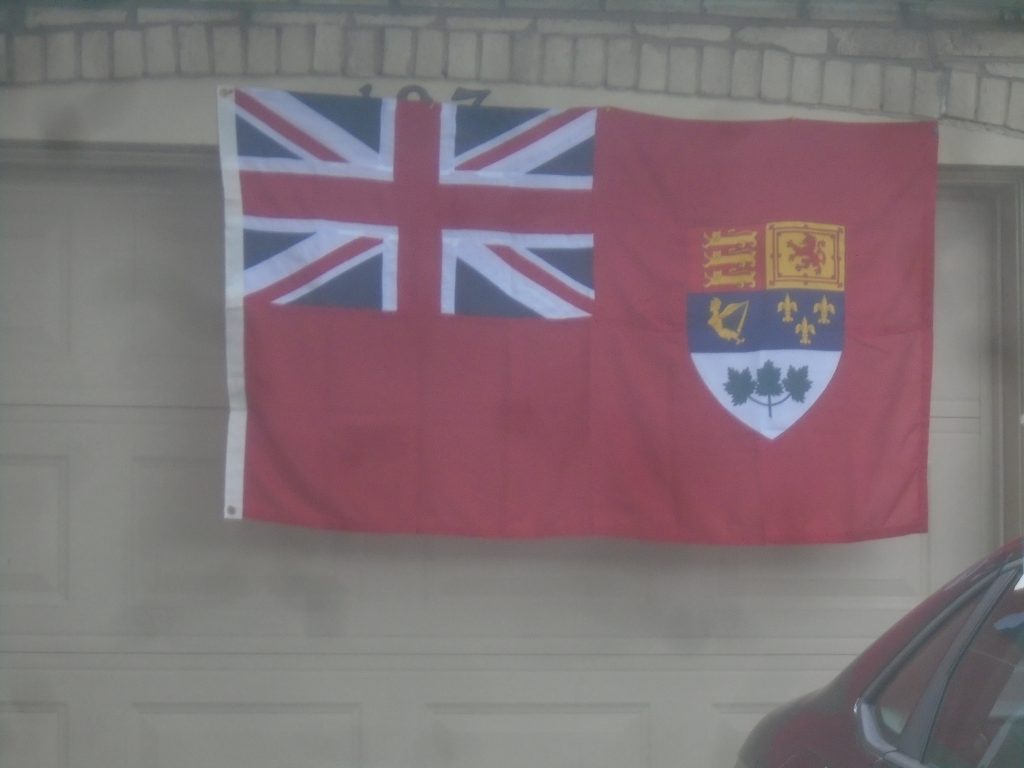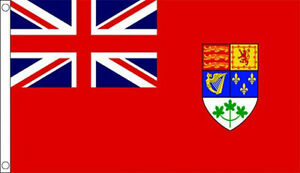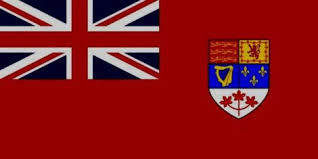For at least the last forty years if you were to have asked a self-described conservative living in North America what conservatism was all about the answer you would have received would have been that it is about small government, low taxes, freedom, free markets, free trade, tough laws and sentences for violent crimes and a strong military. If the conservative you were talking to happened to remember he might have added the defence of the nuclear family and a traditional Christian morality and way of life.
In my country, Canada, conservatism was originally about much more than this. Canada is a country that was founded within the British Empire in the Victorian era and which developed her national sovereignty within the British family of nations without severing ties to the Crown and Britain, the way our republican neighbour to the south had, and as such inherited from the older country, the older kind of conservatism known as Toryism. Toryism was about monarchy, the institutional church, and government for the common good of a national society envisioned as an organic whole that includes past and future generations, not merely those present among us today. I have been a conservative of this older type, a Tory, my entire life.
There has been much talk in recent years of “neo-conservatism”. What is meant by this term is somewhat different in Canada and the United States, although in both countries it refers to either the espousing as conservative of ideas that were once considered liberal, the profession of conservatism by former liberals, or both.
In the United States, the term refers to a very specific group of people and a set of ideas with which they were associated. The original neoconservatives had been members of the group known as the “New York Intellectuals”, which consisted mainly of second generation, Jewish Americans who studied educated either at City College of New York, Columbia University, or both in the period between the World Wars and who in that same period espoused politics that ranged from New Deal liberalism to far-left Trotskyism. After the Second World War many of these became Cold War liberals, i.e., liberals who strongly supported the West in the fight against Soviet Communism, and of these many realigned with the right in the 1960s and 1970s, to become the “neo-conservatives”. The best known among these were Norman Podhoretz, who edited the journal Commentary for decades, his wife Midge Decter, Irving Kristol, also a journalist, and his wife, historian, Gertrude Himmelfarb. It was Kristol who famously defined a neoconservative as a “liberal who has been mugged by reality.” As “neoconservatives” these continued to look upon the New Deal welfare state, the Civil Rights Movement, the early stages of second wave feminism, and other such causes they had espoused as liberals favourably, but it is their outlook on geopolitics that is their most notable distinctive.
The American neoconservatives believe that American style liberal democracy is the birthright of everyone on the planet and that the United States has a duty to guarantee that birthright, by offering military assistance and protection to countries that have liberal democracy, fighting against and toppling the enemies of liberal democracy, and bringing liberal democracy to countries that do not yet enjoy it. For this reason, the neoconservatives believe, the United States must continue to maintain a military presence throughout the world, as the world’s policeman. This vision of a Pax Americana is rooted in liberalism, having antecedents in the war aims of both Woodrow Wilson and Franklin Delano Roosevelt. Its most utopian articulation, that of Francis Fukuyama’s The End of History and the Last Manenvisions all of human history as having lead up to universal capitalism and democracy and is simply the latest manifestation of the Whig theory of history.
The American kind of neo-conservatism has come under much heavy criticism during the last thirteen years for its influential role, during the presidential administration of George W. Bush, in leading the United States into the disastrous War in Iraq. While most of this criticism is well-deserved, those making the criticism seldom understand the nature of the problem with the neoconservative view of geopolitics. Critics on the left, inevitably maintain that all the neoconservative talk about spreading democracy, protecting the rights of women, and such claptrap, is just a thin veil masking the lust to grab power and resources for the United States, or the large corporations that to people of this mindset are the real powers behind the American government, from which it is assumed on the left that the neoconservative enthusiasm for war arises. In reality, however, it is precisely because the neoconservatives are true believers, in Eric Hoffer’s meaning of that expression, in democracy, human rights, liberalism, and basically all the same ideals that their critics on the left hold dear, that they feel that it is imperative that these American liberal values be exported universally.
In Canada, the word neo-conservatism is often used interchangeably with conservatism, in reference to the conservatism described in the first paragraph. This intent of this usage is to contrast what has been called conservatism for the last forty years or so, with the older Toryism. Red Tories in particular like to use the word in this way. Red Tories are people who, like myself, are High Tories of the older royalist, institutional church, and common good-of-the-organic-whole variety, but who, unlike myself, have avowed sympathies with socialism, feminism, pacifism, and other left-of-centre causes for which I have nothing but disdain and contempt. The Red Tories are quite right in saying that much of what is called conservatism today is what was called liberalism a hundred years ago, but I cannot help but observe the irony of the fact that this offered as criticism by those whose Toryism is modified by an adjective that alludes to their espousal of ideals that have also sprung from the modern well of liberalism and much more recently than the capitalism of the neoconservatives. Liberalism is not like a fine wine that has improved with age – it is more like milk that has long passed its expiry date, and been left out in the sun.
At times these attempts to distinguish Canadian neo-conservatism from the older tradition can be exaggerated in a way that can be quite misleading and which distorts the nature of the older Toryism. It is not uncommon, for example, to hear Red Tories say that the older Toryism was the opposite of what is called conservatism today. Think about what that suggests regarding the first items mentioned in the description of conservatism in the first paragraph – small government, low taxes, free markets, and free trade. (1) There is a grain of truth in this when it comes to free trade – the older Toryism espoused protectionism – but if we were to accept the assertion that the older conservatism was the opposite of today’s conservatism, we would have to conclude that it was opposed to freedom and stood for big government, high taxes, and a centrally planned and bureaucratically administered economy. This, however, is laughable nonsense. Indeed, as I have frequently pointed out, the older “throne and altar” Toryism, ought to be regarded as being more favourable to small government and low taxes than contemporary North American conservatism. Toryism was born out of the defence of royal sovereign authority against those who wished to wrest it away from the Crown and to vest all power in elected legislative assemblies. The opponents of the original Tories declared themselves to be on the side of “liberty” against tyranny, but the history of the last four centuries tells us another story. What that history tells us is that the more the Crown’s authority was limited and the power of the elected assembly augmented, the larger and more intrusive government became, while taxes grew both exponentially and astronomically. (2)
With regards to freedom, the difference between the older Toryism and the classical liberalism that much of modern conservatism resembles was not that the latter supported freedom while the former opposed and feared it. It was rather a disagreement about the nature of freedom. The classical liberals equated liberty with the sovereignty of the individual, argued that the function of government was to protect liberty so defined, and declared that only democratic governments, in which each individual participates at least through his elected representative, can so protect the liberty that is individual sovereignty. By contrast, the Tory view of freedom, grounded in the thought of classical antiquity, was explained by the martyred King Charles I, in his final speech before his execution, when he declared that the liberty and freedom of the people consist in their having from their government “those laws by which their life and their goods may be most their own” rather than “having share in government”.
Anyone who happens to think that the liberal doctrine is more conducive to personal freedom than that of the Tory it is invited to look around him today. The idea of freedom as individual sovereignty is now being taken to the nth degree, with even such constraints on that sovereignty as those of nature and reality itself no longer recognized as valid. Thus, for example, gender is now being declared to be something that the individual decides for himself – or herself – or itself – or whatever! By consequence, liberalism is now declaring such self-determination of gender to be a right of the individual, which is to say something that belongs to the essence of the individual’s sovereignty. Since in liberal theory, the rights of the individual are what law and government exist to protect, the consequence of this will inevitably be that the legislatures and courts, will impose legal restrictions on what we can think, say or do, in order to protect such a “right”. The more the individual is declared to be sovereign, the more new “rights” are discovered, the more laws restricting our thoughts, speech, and actions are passed, so that what is called “freedom” today, often resembles a soft form of totalitarian tyranny. (3)
Contemporary conservatism, or what is called in Canada neo-conservatism, ought not to be faulted by Tories of the older tradition merely for being in favour of small government, low taxes, and freedom. It merits criticism for defining conservatism by such things, rather than by monarchy, institutional religion, the common good of the organic whole, and by such things as continuity, tradition, and established order for which the older Toryism stood, and which, as Roger Scruton argued in The Meaning of Conservatism, provide the necessary context for any real freedom to exist and flourish in a civilized society. There was nothing wrong with Canadian neo-conservatism’s opposition to Canadians being taxed to death, overregulated, and treated as wards of a nanny state and it was for these things that this High Tory voted for and even took out membership in the neoconservative Reform Party in the 1990s. Where Canadian neo-conservatism did deserve censure was over the anti-patriotic contempt for Canada and wish that she was “more like the United States” that could far too often be found in its ranks, as well as the liberal equation of democracy with freedom and legitimate and accountable government evident in its wish to turn the Senate into an elected body which was such a marked contrast with the way the older Canadian Toryism defended our Westminster parliamentary monarchy, including the Senate, correctly perceiving that it and our traditional rights and freedoms, stood and fell together. (4) It was over these things that I walked away from the Canadian Alliance prior to the completion of its merger with the Progressive Conservatives in 2003.
(1) It is even less accurate to say that the older Toryism was the opposite of the other items mentioned in the first paragraph, although here too there are important distinctions to be drawn. The family that the older Toryism defended, for example, was not just the nuclear unit, but a larger, multigenerational, kinship group, headed by a patriarch. Also, the older Toryism tended to look to the organized Church for what “a traditional Christian morality and way of life” meant, while contemporary conservatism is more likely to be influenced by personal interpretations of the Scriptures.
(2) It was not uncommon in the last century for such High Tories as Anthony Burgess, J. R. R. Tolkien, and Robertson Davies (as Samuel Marchbanks) to avow both a feudal, medieval royalism and an attitude of anarchistic contempt for the gargantuan, overregulating body that is the modern bureaucratic state in the same breathe, a sentiment which I heartily share.
(3) That liberalism was a doctrine that loudly proclaimed its faith in freedom while containing within itself the seeds of totalitarian tyranny was not something that was only evident after it had been brought to its apex in the 20th and 21st centuries. In the sixteenth century, the Puritan progenitors of the first liberals, the Whigs, denounced the “tyranny” of the House of Stuart and proclaimed themselves to be on the side of liberty, but when they had seized power for themselves, made it illegal to participate in sports, games, and other amusements on Sundays after church, closed inns, alehouses and theatres, and banned the celebration of Christmas and Easter. In the century prior to that, the first Puritans, in the name of defending Christian liberty against “popish tyranny”, demanded that all practices that were part of the pre-Reformation tradition but which could not be shown to be explicitly authorized in Scripture should be forbidden, while Richard Hooker, in his Lawes of Ecclesiastical Polity, argued on the contrary, that Christians ought to be free to observe, whatever practices of the pre-Reformation tradition could not be shown to be explicitly condemned in Scriptures. Hooker’s thinking, which helped lay a foundation for both a distinctive Anglican theology and Toryism, to any rational person, allowed a greater amount of freedom than that of the Puritans which eventually gave birth to liberalism.
(4) See, for example, John Farthing’s Freedom Wears a Crown(Toronto: Kingswood House, 1957) and John G. Diefenbaker’s Those Things We Treasure (Toronto: Macmillan, 1972)
.












